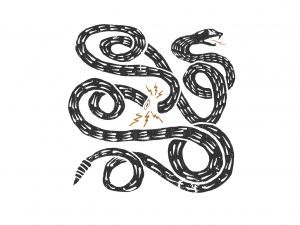
Acupuncture can help with lower back pain. One recent review of clinical trials found statistically significant reductions in pain compared to sham treatment (1), and another concluded that acupuncture appears to be effective in treating non-specific lower back pain, and may be an important supplement to usual care (2). But often it’s going to take a bit more than the acupuncture, and there’s a bit of a journey involved.
Most people’s backs will get a bit sore sometimes. And most often the discomfort will be mild and get better soon enough. Many will experience an acute episode of sudden back pain that is quite debilitating, affecting their movement and ability to do normal activities. And for some people this pain and affect on daily life goes on for longer. Acupuncture can help with both acute and chronic back pain. So can cupping. But it is quite often part of a multi-factorial path to recovery. I can’t always fix your back pain on my own, and I don’t believe anyone who says they can.
By the time your back indicates something is wrong by giving pain signals it’s usually been putting up with things that upset it for some time. Bad posture, prolonged sitting, poor exercise form, dehydration and many other factors can make backs cry out for attention. And their cries can be loud. As soon as the body thinks the spine is in danger it responds by cramping up the surrounding muscles to try to protect it. And while this response helps people survive, the pain from the tensed muscles or from their pull on the spinal infrastructure can severely limit activity.
So the primary goal of acupuncture and cupping or any other physical therapy is to relax the surrounding musculature to stop it adding to the pain. Quite often the signals that made the body think there was a danger to the spine so it should tense up are a bit of an overreaction, and relaxing the spasmodic muscles can teach it that there was really not that much going on.
Sometimes there actually is some damage to the spine.
Conventional medicine has been fixated on a model of injury to the intervertebral disc as a cause of back pain. Once called a slipped disc, the talk is now of a prolapsed or herniated disc, and many doctors and surgeons have models in their clinic that show a prolapsed disc pressing on the nerves that emerge from between the vertebrae. But this kind of protrusion isn’t actually a common cause of lower back pain*, and will probably cause weakness, numbness, or tingling in the legs as well as pain.
More common is when the gooey stuff in the middle of a vertebral disc (nucleus pulposus) gets squelched out into the rest of the disc. This is what causes a ‘swollen disc’. As the disc is a bit like an onion with concentric layers, this gooey stuff can get pushed out through one layer, or two, without poking outside the disc as a whole. The bad news is that whenever this stuff gets out of where it’s supposed to be it causes inflammation and pain. And this inflammation itself may irritate the vertebral nerve roots to cause referred pain away from the back, in the buttocks or leg. But with time the pain usually gets better.
Imaging of the spine and cadaveric inspection often finds really stuffed up spines in people who don’t, or didn’t have back pain. Many people with ‘swollen discs’ don’t have back pain, so it could be argued that a swollen disc doesn’t necessarily cause back pain, or cause the pain an individual with a swollen disc feels. And even if observable injury to the spine does cause person back pain, they often can become like someone who has the same problem with their spine but doesn’t have pain. So surgery to make the spine more like one with a proper structure may not be necessary.
But it can take time, and be frustrating. It’s a path of learning what helps you personally, and what doesn’t. It can be a process of learning new ways of moving, standing, sitting, working, exercising, resting, sleeping. Some people find swimming helps, or yoga, or Pilates. Others don’t. But generally any kind of activity is currently thought to be better than inactivity. Physiotherapy, osteopathy, chiropractic may help. Sometimes they don’t. Acupuncture can help, but as I said before, sometimes it doesn’t.
It can require patience to recover from long-term back pain, but most do recover.
* Disc herniation occurs in between 5 to 20 cases per 1000 adults annually, and causes symptoms in 1-3 percent of patients (3). Yet at any one time 12% of the adult population has lower back pain, and 38% will experience it in a year (4)
1. Xiang Y, He J, Tian H, Cao B, Li R. Evidence of efficacy of acupuncture in the management of low back pain: a systematic review and meta-analysis of randomised placebo- or sham-controlled trials. Acupuncture in Medicine. 2020;38(1):15-24. doi:10.1136/acupmed-2017-011445
2. Li Y, Yuan S, Jiang J, Li H, Wang Y. Systematic review and meta-analysis of effects of acupuncture on pain and function in non-specific low back pain. Acupuncture in Medicine. 2020;38(4):235-243. doi:10.1136/acupmed-2017-011622
3. Dydyk AM, Ngnitewe Massa R, Mesfin FB. Disc Herniation. [Updated 2021 Jul 12]. In: StatPearls [Internet]. Treasure Island (FL): StatPearls Publishing; 2021 Jan-. Available from: https://www.ncbi.nlm.nih.gov/books/NBK441822/